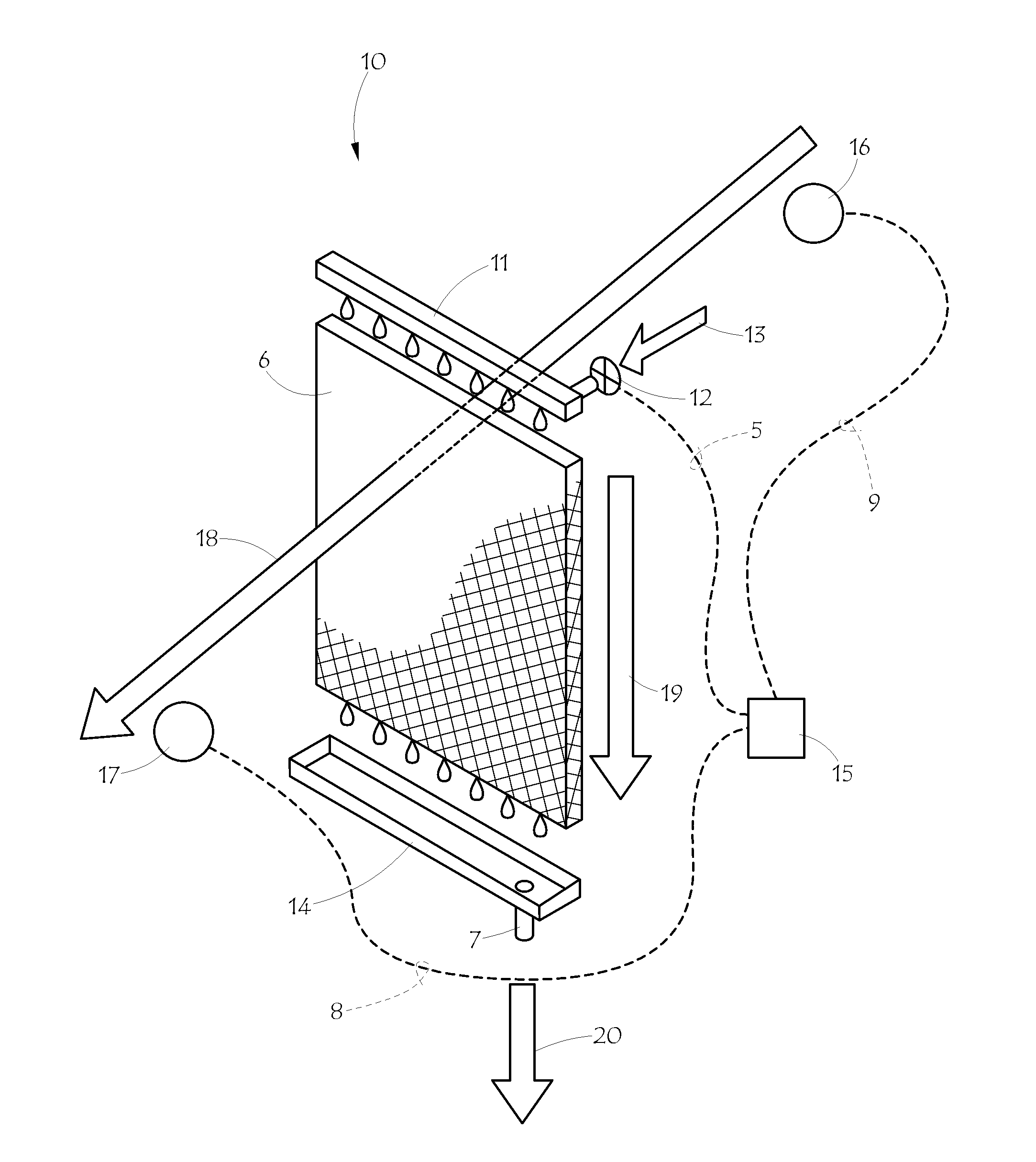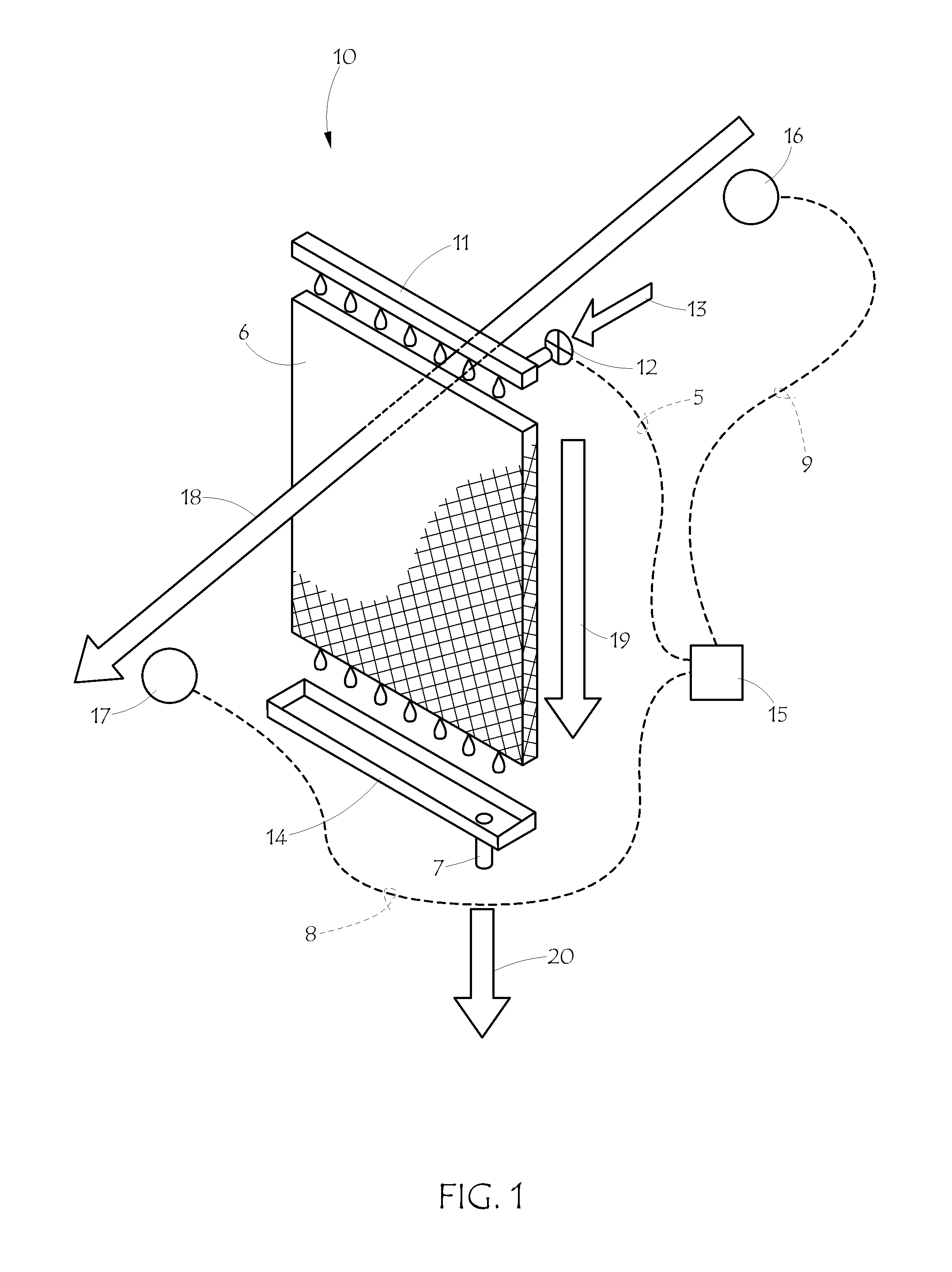Air Humidification System
- Summary
- Abstract
- Description
- Claims
- Application Information
AI Technical Summary
Benefits of technology
Problems solved by technology
Method used
Image
Examples
Embodiment Construction
[0029]The invention consists of an air humidification system employing a housing to contain all of the parts, an evaporator pad, a water delivery system to deliver water to the evaporator pad, a drain system to allow excess water to flow away from the humidification system, temperature sensors to measure the air temperature being supplied to the humidification system and the temperature of the air flowing out of the humidification system, and a control system to operate the electrical portions of the system. The control system controls water flow to the pad to maintain the temperature differential of the air upstream and downstream of the pad near its maximum value. At the same time the control system uses a small amount of water, maintaining a small amount of drain water flow in proportion to the output. Other optional features may be included, some of which will be described herein.
[0030]FIG. 1 is a schematic representation of an embodiment of the invention showing the key parts a...
PUM
| Property | Measurement | Unit |
|---|---|---|
| Temperature | aaaaa | aaaaa |
| Fraction | aaaaa | aaaaa |
| Humidity | aaaaa | aaaaa |
Abstract
Description
Claims
Application Information
 Login to View More
Login to View More - R&D
- Intellectual Property
- Life Sciences
- Materials
- Tech Scout
- Unparalleled Data Quality
- Higher Quality Content
- 60% Fewer Hallucinations
Browse by: Latest US Patents, China's latest patents, Technical Efficacy Thesaurus, Application Domain, Technology Topic, Popular Technical Reports.
© 2025 PatSnap. All rights reserved.Legal|Privacy policy|Modern Slavery Act Transparency Statement|Sitemap|About US| Contact US: help@patsnap.com



